Download the diagram from this feature.
Britain’s urban areas outside London are at varying stages of major changes to the way transport is prioritised and managed, which presents both challenges and opportunities for the rail industry. The reasons why handing powers to cities, regions and countries has become a major theme of the early 21st century is encapsulated by the view of Richard de Cani, Managing Director of Planning at Transport for London: “Passengers in other parts of the country too often face fragmented services, confusing ticket structures and a network that simply does not join up. That’s why the push to devolve powers to cities is so important.” All major cities are focusing on how to create that virtuous circle of growth through transport and other enablers so that they can develop dynamic and attractive environments.
How devolution might improve transport has been a theme rising up national and regional agendas since powers over Scottish railways were transferred from the Department for Transport to the Scottish Executive in 2005.
Transport is not only seen as a prime driver of growth and prosperity, there has also been a recognition that widespread investment in transport benefits the whole country, and isn’t a zero-sum game. This has encouraged a regional outlook, seeing benefits in planning as an agglomeration.
A recent report by the Smith Institute for PwC (Full Speed Ahead: connecting our cities and regions, June 2015) suggested that the key to improving connectivity centred on sustained investment and improving collaboration. Both can be addressed by giving greater power to national (in the case of Wales and Scotland) and regional bodies.
The UK’s poor productivity is seen as another compelling reason for devolving transport powers. Workers in the UK produce on average 30% less per hour than workers in Germany, the US and France - we even produce 10% less than the average Italian. Poor infrastructure is cited as one reason - as a report by the think tank Policy Exchange (On the Move: How to create a more mobile workforce, August 2015) says: “Making it easier for people - especially those on low incomes - to commute a further 20 minutes each way would put them within touch of two or more major employment sites, and potentially 10,000 more jobs.”
Much of the central pressure for devolution is coming from Chancellor George Osborne and the Treasury. In the wake of Greater Manchester’s ground-breaking devolution deal signed in November 2014, an invitation for other proposals produced 38 responses from cities, towns and counties, ranging from Cornwall and Dorset to the Tees Valley and Cumbria. Future deals will be supported through the Cities and Local Governments Devolution Bill, which received Royal Assent in January.
The extent to which powers might be devolved is likely to vary, with each having a bespoke arrangement. Agreements to devolve transport powers are already under way for Sheffield City Region Combined Authority, West Yorkshire, Cornwall and the West Midlands. And the individual character of devolution can be clearly seen in the bodies that already exercise delegated transport powers - Scotland, Wales and London.
Scotland is both the franchising authority and the funding specifier for Network Rail. Besides being a substantial owner and operator of transport, Transport for London is also the franchising authority for London Overground routes (although it does not specify Network Rail spending). And though Wales is not yet the franchising authority, the Welsh Assembly Government has funded significant rail infrastructure improvements such as the re-opening of the Vale of Glamorgan Line.
In northern England, Transport for the North (TfN) will gain statutory powers before the end of 2016, and Rail North will become part of TfN as its franchising arm and joint manager (with the DfT) of the Arriva Rail North and TransPennine Express franchises from April 1 2016.
Although there is no rigid template for devolution, it is most likely to improve transport when responsibility is devolved to a significant, coherent and contiguous body, argues Transport Scotland Commercial Director Bill Reeve.
“Where you devolve responsibility in that way, it raises the profile of transport and causes politicians to be willing to make commitments on transport and reallocate resources to reflect them. It also allows decision-making to reflect local priorities and understanding rather than be hidebound by centralised evaluation criteria,” he says.
“A powerful illustration of this was the long list of schemes which the Strategic Rail Authority had to choose priorities from, many of which had not a hope and had to be cut. One of them was the Borders Railway - it came nowhere near the top of the appraisal list of transport projects, being expensive and offering a low return in railway investment terms. But in Scotland it was understood as a wider economic project, intended to rejuvenate the Borders and Midlothian economy, and devolution allowed us to take a different perspective on the rationale for investment.”
No part of England has an equivalent democratic body, so a challenge for TfN will be welding six separate metropolitan authorities accustomed to doing things their own way into a unified vision for the Northern Powerhouse. Similarly West Midlands Rail is a partnership of 14 metropolitan district, shire and unitary local transport authorities - but there is a world of difference between the needs and priorities of Dudley and Herefordshire.
However, as Jonathan Bray, of the Urban Transport Group, points out: “Rail North shows people can reconcile their aspirations into a collective view, which is quite an achievement given the number of local authorities. It is better they do this than having it done by Whitehall. PTEs have managed to reconcile differences in the past by trade-offs and placing core needs at the top of a list. It would be foolish to pretend everything will always be harmonious, but it is still a case of better together.”
Paradoxically, surrendering certain local powers can be part of the new order. Strathclyde Partnership for Transport (SPT) no longer has the rail powers it once exercised as Strathclyde Passenger Transport Executive, but still runs the Glasgow Subway. SPT is one of seven regional transport partnerships (RTPs) set up by the Transport (Scotland) Act 2005 that provide Transport Scotland with local input as part of their remit to use transport to stimulate sustainable economic development.
Faster and cheaper decision-making should be another benefit. Professor Stuart Cole, of the University of South Wales, cites the long tussle over the extent of electrification in South Wales, which included a Ribblehead Viaduct-style argument over the difficulty and cost of wiring the Severn Tunnel.
And Campaign for Better Transport Chief Executive Stephen Joseph adds: “The whole argument for the Northern Powerhouse and devolution is that investment has to be seen as a regeneration project, and local bodies will take a more holistic view of the benefits and costs.”
The principle is to devolve where possible to the most appropriate level of governance for the nature of the decision to be taken, and that in doing so this will help to address some of the decades-long criticisms of transport and planning. As the CBT summarises it: “Devolved transport authorities are also better able to ensure that decisions on local transport relate to the ways in which local economies are developing. They can better align transport with land-use planning, reducing congestion, pollution and car dependence and adding value to developments.”
The innovative specification of the new ScotRail franchise, thanks to the input of Transport Scotland, was covered in RailReview Q4-2014, and a similar process has been carried out by the North.
Transport for the North Chief Executive David Brown says that they “asked what was required to grow the economy of the North. We listened to local transport authorities across the North and produced a business-like strategy with evidence for enhanced and new services so that it wasn’t just a wish list. This research was presented to bidders, and the service enhancements in the new franchises will see the biggest transformation of railways in the North for a very long time, leading to huge further growth.”
TfN and Rail North have drawn on the experiences of Merseyrail and Transport Scotland in their work on the ARN and TPE franchises. David Hoggarth, Director of Rail North, is looking to develop RN’s expertise so that the Rail North Partnership (with new local management team) will have the ability to take over full franchising and management responsibilities when the northern franchises come up for renewal in seven to ten years, as envisaged in the agreements.
“The new partnership model of 50/50 management with the DfT is a good stepping stone to full devolution, giving regional ownership from day one,” he says. “Under the partnership agreement a 50/50 board will oversee the work of the management team based in Leeds. Rail North has the flexibility to make improvements and enhancements provided we don’t cost the Secretary of State more money or we fund any changes.”
For Brown, that means quite small schemes that would never become part of a national plan can be implemented:
“For me, devolution is about putting the responsibility in the right place so objectives are being met. Scotland is a good example. They are much clearer about their strategic priorities, so they can make the case and allocate the funding.”
In London, TfL and DfT are establishing a better way of working together - a more logical way of organising their spheres of influence. That will entail the transfer of contracting responsibilities for further inner-suburban rail services from DfT to TfL as they come to the end of their franchise period. As with current London Overground and Crossrail lines, TfL will look after both procurement and management, using the concession model that has proved so successful.
Geoff Hobbs, head of transport planning for London Rail and Underground, doesn’t advocate concessions in all circumstances: “The concession model is good for urban railways because we ask for a restricted number of objectives, for which we incentivise them very heavily. All are overwhelmingly within their control - such as minutes of delay and all aspects of service quality - but not fares, demand and revenue.
“A concession is appropriate in an urban context where there is not much practical alternative to taking a train to work. We do not want a concessionaire to operate in competition to buses. We have used this model for buses, trams and heavy rail, and found a strong correlation between the way the contracts are written and the quality of service.”
By joint management (with the DfT) of the Northern and TPE franchises from April 2016, Rail North and its local staff will become accountable for day-to-day performance. If the outcomes revealed in a study of London Overground and Merseyrail (Going Local: Lessons for rail policy from London Overground and Merseyrail, Campaign for Better Transport, 2013) are replicated, the passenger experience should be significantly improved.
The success of local accountability in transforming services is evident in the way the profit-sharing concession of Merseyrail Electrics has shed its ‘Miseryrail’ image since 2002, to become one of the consistently best-performing TOCs. Merseyrail Electrics is managed locally by the Passenger Transport Executive, Merseytravel, and the franchise specifications are much tighter than other comparable rail franchises, stipulating such quality measures as overcrowding, maximum standing time for passengers and station staffing. WMR also sees huge opportunity from local management of the franchise agreement by people who use the railway on a daily basis, and the local politicians who have to answer to the electorate.
The revival of the North London and West London Lines by London Overground (LOROL) is a similar story, with annual use of the West London Line more than doubling in ten years, from 12.4 million in 2005/06 to 25.3 million in 2013/14.
It also helps that many LOROL and TfL head office staff use the trains to reach the Swiss Cottage offices, giving a daily insight into operations. Hobbs points out that the statistics on service quality showed an improvement almost from day one in November 2007, before even a penny of investment influenced perceptions.
The fundamental object of transport devolution must be better public transport services that reduce car use and improve the quality of life. Post-industrial cities are increasingly recognising that to attract inward investment they need to offer a high-quality environment, part of which invariably means cleaning up the air by traffic restraint and encouraging non-polluting modes. The creative thinking behind the 38 devolution proposals conveys a new sense of purpose and optimism in what might be achieved.
Modal change has been a driver of Centro’s policies for a long time, hinged around large, free car parks at stations. A key aspiration of WMR and TfN is to improve the frequency of evening and Sunday services, to reflect economic realities.
Devolution allows much quicker adjustments to services. The chairman of Merseytravel, Councillor Liam Robinson, points to the way a Boxing Day service was introduced in 2015, without time-consuming discussions with the DfT. He also cites the flexibility to respond to the demands of the region’s one-off events, such as the Cunard’s Three Queens ocean liner event in Liverpool which attracted over a million people in the summer of 2015 and the yearly Grand National, as well as regular football fixtures.
A simple illustration of the kind of local fine tuning that increases revenue and reduces cost is the overnight stabling since 2015 of trains at Llandovery and Llandrindod Wells on the Heart of Wales Line. This allows them to operate early morning commuter services into Swansea and Shrewsbury, instead of both starting at the opposite end of the line and running almost empty for more than half the journey.
Often it comes down to a simple timetable adjustment through a change of priority, such as focusing on the needs of Sellafield workers in the morning and late afternoon rather than Cumbrian Coast connections at Carlisle.
Devolution also offers the chance to improve the coherence of marketing and the stability of branding. Merseyrail Electrics is an unusually long 25-year franchise - most are much shorter, and TfN research suggests that this inhibits brand recognition and confuses passengers.
It is to counter this that WMR wants to create a brand throughout the region that will transcend changes in franchising arrangements. Besides cementing the identity of transport providers in passengers’ minds, it obviates the wasteful rebranding of stations, trains and information every time a franchise changes. Malcolm Holmes, consultant for WMR, highlights a wish “to realign incentives so that franchisee marketing budgets are not devoted to high-yield routes, which is perfectly understandable, but leads to under-promotion of many lines”.
Re-opening lines may move up more regional agendas, such as the North East Combined Authority’s commitment to examine the business case for reviving passenger services on the line between Benton Quarry Junction, Blyth and Ashington.
All devolved authorities have station improvements in their sights, intent on overcoming the historic reluctance of short-franchise TOCs to invest.
Merseyrail Head of Rail Wayne Menzies is looking at propositions for developing stations on Merseyrail and beyond, including all the lines into Liverpool Lime Street and the city’s flagship station itself. Standards at Merseyrail stations have already been raised, with a Bike & Go scheme installed at some, but many stations could and should be more than just a place to catch trains.
Holmes stresses the need to apply appropriate incentives to improve and maintain stations, especially when the subsidy is high and the commercial returns are low. Each of the 120 stations in the WMR area will require a different approach, but the potential of adoption and greater community involvement - exemplified by many Community Rail Partnerships - needs to be realised , and in the suburbs and inner cities, not just the more rural places. Such stations increase patronage, engage local residents, reduce vandalism and make the station more relevant to the life of the community.
Bray cautions against the hasty sell-off of railway assets to plug funding gaps, as Network Rail is currently under pressure to do. Many authorities regret the excessive zeal applied to station rationalisation schemes at a time when passenger growth was unthinkable. Losing control of the way stations are developed or the ability to raise the standards of retail outlets, as at St Pancras and King’s Cross, may be regretted. Station rationalisation prevented more considered developments such as the recent exemplar of Wakefield Kirkgate, where restoration has improved integration with buses, and created new facilities for passengers as well as a source of income from commercial office space for local businesses.
Dramatic reductions in franchise subsidies, or even payments to the Treasury, characterise recent franchise agreements (aided by planning for growth). Funding for infrastructure improvements or new construction is helped by devolution, which attracts greater investment in transport. As Bray points out, regions attach greater importance to transport than Whitehall, and can be creative in assembling a host of funding sources.
The £14.8 billion required for Crossrail could only have been raised from multiple sources: central government; TfL (using bonds backed by future fares revenue); a business rate supplement graded according to distance from the railway; direct contributions such as BAA’s £230 million for the junctions at Stockley; and Canary Wharf Ltd building the station box at the eponymous station; Section 106 grants from developers; and the sale or lease of premises built over stations.
Elsewhere, funding for the Borders Railway was helped by a levy on new housing along the route, thanks to a growing awareness among developers that good public transport raises the value of housing in a way that roads no longer do.
Nottingham’s tram lines 2 and 3 were part funded by a workplace parking levy, an idea that Cambridge and Oxford are looking at. Haymarket station on the Tyne & Wear Metro was paid for by developer contributions.
Only the Scottish Parliament has full powers to decide how much it spends on transport. But the transfer of multi-year budgets is vital to plan and fund projects on the scale of Crossrail or the Tyne & Wear expansion and new train plans. It is probably only a matter of time before congestion charging and business rate supplements, which provide funding for TfL, return to the agenda in other cities.
Not since John Prescott was a transport minister has integration been a watchword, despite continental paradigms proving its efficacy. The Full Speed Ahead report was emphatic that a multi-modal, joined-up transport network required “thinking long-term and making difficult (and sometimes unpopular) decisions in support of public transport”.
Co-ordinated planning and control of public transport levers is vital for such aspirations. As Bray says: “Devolution is key to bringing back integration into the city regions - by specifying rail fares, ticketing, branding and joining up with buses, you can achieve something that looks more like London.”
The North East Combined Authority officially describes itself as the “UK’s first fully integrated transport system, with the ambition to bring together responsibilities for rail, local highways, metro, buses and ferries, for both urban, sub-urban and rural communities”. Transport Scotland is committed to partnership working with private bus companies, but is working to deliver a single smart ticketing system across all public transport.
Emulating the rigour applied to modal integration in Switzerland will benefit rail and buses/light rail, and help to reverse the damaging consequences of bus deregulation that has led to a near-universal decline in bus use and the loss of more than 2,000 routes since 2010.
In Wales TrawsCymru, the new bus brand owned by the Welsh Government, specifies franchised services designed to complement and connect with rail services that are shown on TrawsCymru’s network map. The ability to reverse years of decline is illustrated by the T1 route between Aberystwyth and Carmarthen - passenger numbers have grown from 100,000 two and a half years ago to 300,000, and the average subsidy per rural Wales trip has been reduced from between £3 and £5 to 57p.
Professor Cole, whose students at the University of South Wales have been involved in work for TrawsCymru, sees the major issue as co-ordination of the networks. A new form of bus franchising is needed, with groups of local authorities forming four or five joint transport authorities under a national transport body. The Travelcard currently being tested would be developed into a national travel card, using the current concessionary pass system to allocate funding.The forthcoming Westminster Buses Bill will enable English local authorities to franchise bus networks and establish multi-modal ticketing, information and marketing. It is still an open question for many local authorities whether they choose franchising or deep partnerships.
In the more rurally located cities there is evidence of apprehension that they will not be able to avail themselves of devolved powers in the same way - partly for want of neighbouring partners.
Sir Peter Soulsby, the city of Leicester’s elected mayor, says it is important for rural areas not to be overlooked. “These proposals make sense in metropolitan areas, but it’s important that differences in local political geography are recognised,” he says
Cambridge is another isolated city, although its phenomenal growth is likely to allay anxiety.
Exeter is served by five railway lines and plans four new stations in the county’s Devon Metro proposal, as well as the re-opening of the line between Bere Alston and Tavistock (if not Okehampton), encouraged by the success of recent initiatives such as the opening of Digby & Towton station on the Exmouth line and more trains.
Full Speed Ahead echoed these concerns for rural areas. However, in Scotland Bill Reeve says it is “in our DNA not to focus just on the Central Belt”. The Highlands and the region’s tourism were well-served by the ScotRail franchise specification, and recent marketing of the Fort William Sleeper has been so successful that carriages have been borrowed from the Aberdeen service.
If there is one area over which many would see national planning as necessary, it is the provision of rolling stock. How else can one achieve economies of scale or sensible cascades of rolling stock?
Yet Joseph believes ROSCOs find devolved bodies better to deal with because they know what they want, set it out clearly and stick with it, backed by sensible long-term deals on funding.
Reeve cites the history of boom and bust in rolling stock procurement, and sees “centralised processes as failing to lead to confidence in the supply base of regular order books that would encourage investment in skills and capacity”.
He adds: “The market for second-hand rolling stock at the end of a first franchise period is ineffective - because leases are usually signed up alongside franchising contracts, the chance of a combination of the right fleet coming off-lease and demand from a franchise is minimal. Growth has meant we are perennially short of rolling stock. I don’t see the current market working well. There has been a risk that trains in which we have invested end up being taken away even though we want to keep them. It also creates inflationary pressure because old rolling stock is being priced just under new, instead of on a depreciated asset basis.
“Devolution allows authorities to look at different ways of financing trains. In Scotland, by the 15- and 20-year underwriting of assets, we benefit from cheaper finance and lease prices as a result, and enjoy price certainty. After the period of underwriting, we have the option to buy the trains for £1. Devolved authorities with responsibility for rolling stock have not followed the DfT leasing model, and I would expect to see a lot more innovation in this area.”
On Merseyrail, Robinson is looking “to procure new trains ourselves because as a public authority we can borrow the money much cheaper than using a ROSCO. Because we operate a bespoke network, we can make sure the trains stay with us for their entire working life. We become an asset steward rather than just leasing from a ROSCO.
“Devolution has strengthened that ability, allowing a more detailed appraisal of the specification and the five offers to build them. The spec is future-proofed so the trains could be converted to dual-voltage traction if services are extended to overhead lines.”
The importance attached to passenger perceptions of trains in achieving modal shift is reflected in the determination of devolved transport authorities to secure new or refurbished trains. TfN’s Brown points to the 10% to 15% growth Northern is reporting from refurbished electric trains on the Liverpool-Manchester route: “Imagine the effect of faster new trains with WiFi in releasing suppressed demand.”
Bray sees synergies developing between devolved networks over the potential for tram-trains, once the Sheffield/Rotherham pilot is up and running. It is not only the attractiveness of trams in persuading people out of cars, but also the ability of tram-trains to free up space at city stations, especially in Leeds and Birmingham where extra capacity is at a premium. Moreover, they are a way of avoiding taking lines off the national network and precluding their use for freight or conventional passenger trains. Both Nexus and Transport for Greater Manchester are interested in extending tram services onto the national network.
Devolution is bound to raise concerns among operators and users of long-distance passenger and freight trains. Their needs are not inimical to the objects of devolution, but need to be kept firmly in mind and safeguarded when devolved decisions are taken.
As Maggie Simpson, executive director of the Rail Freight Group, puts it: “The elements that are necessary are pretty simple. Central control of freight timetabling and control across the network. A financial and regulatory model which enables freight to grow and prosper. And a duty on all parts of the industry - be that devolved Network Rail, franchises or Government - to promote the use of the network for freight. Three asks.”
Merseytravel is leading on TfN’s freight strategy. Peel Ports’ new £350m in-river deepwater berth of Liverpool 2 will be capable of taking post-Panamax vessels, so from being able to accept 5% of the world’s container ships, it will be able to receive 95%. Robinson expects freight through the port to more than double because 60% of the freight currently unloaded at southeast ports is destined for north of Birmingham. “We need new rail capacity, and if we get a new, twin-track rail link between Liverpool and Manchester which also connects directly onto the planned HS2 network this will help free up capacity on the classic network for freight.”
Brown sees freight as a major component of TfN’s strategy: “We have ports on both sides and many logistics centres. We need new rail connections and paths because the last thing we want is more freight on congested motorways.”
There is also anxiety over the way Network Rail might be restructured. It would be unhelpful for any new boundaries not to match those of nascent regional bodies. The area of WMR follows natural boundaries, but some areas are much more difficult to delineate, such as East Anglia. When it comes to responsibility for infrastructure, freight operators might expect public authorities to take a more balanced view of track access than passenger TOCs.
With the exception of Scotland, where services on the two cross-border lines are easily managed, any redrawing of boundaries is fraught with difficulty. Professor Cole points out that the Welsh network, being a reversed E, would be useless without the Chester-Shrewsbury-Hereford-Newport line.
Much of the pressure for changes to NR comes from its uneven project delivery and from the cost of even small jobs because of its overheads, fuelling debate over the balance between economies of scale and the economies of local management. Hobbs says TfL deals with three NR zones now, and wants a seamless integration of new services such as Crossrail. He adds: “Response times are quicker when there are fewer people to phone when something goes wrong.”
To what extent will devolution prompt a rethink about the appropriate balance of investment between road and rail, given the overarching goal of carbon reduction, air quality improvements and other desirable outcomes? There is still evidence of a bias towards road spending in some areas, despite it exacerbating the very problems transport investment is supposed to be tackling.
An eye-watering £3bn is being spent on the A9 in an environmentally sensitive area of Scotland, rather than improving the capacity of the Highland Main Line to accommodate 28-container trains and more frequent services by judicious extending of passing loops and more doubling. (In the early 1980s, £200m was lavished on the same road - in 1982 the entire BR Scottish Region investment budget was £8.6m.) In comparison, Transport Scotland’s Control Period 5 specification included a Highland Main Line upgrade project, and the ScotRail franchise specification required improvements to intercity rolling stock which will lead to refurbished HSTs being introduced on faster timetables.
In Wales there is criticism of the decision to spend £1.5bn on the 15-mile M4 relief road around the south of Newport, in comparison with the rail projects that sum would fund. Besides worsening pollution in the area, the road has been criticised by Associated British Ports, which believes the plans could jeopardise future investment in the area. Critics argue that park-and-ride stations, coupled with the South Wales Metro plans, would relieve congestion on the current M4 and reduce pollution at less cost.
Bray recognises the political challenges of traffic restraint, but nevertheless air pollution and the desire for more liveable city environments are rocketing up the agenda. Manchester’s interim mayor Tony Lloyd believes that “if we are going to do something serious about the carbon footprint in Greater Manchester and the 2,000 premature deaths caused by air pollution, then it’s by reducing the number of cars, lorries and polluting vehicles we have on the roads.”
CBT’s Joseph adds: “Good companies are deterred from investing in cities with poor air quality, and that will drive electrification and other things such as Nottingham’s trams and its large electric bus fleet, which are part of a broader strategy to reduce carbon and cars in the city.”
Far-sighted mayors can also do things that parties are reluctant to enact - Bristol’s mayor has driven through bus priority schemes, 20mph zones and residents’ parking.
Reeve believes devolution will bring about fundamental change in the analysis and planning of transport projects: “The DfT has investment selection criteria led by Treasury Green Book economic analysis, calculating benefit:cost ratios and ranking schemes. It has strengths, but it doesn’t capture everything - there is no methodology for monetising many of the benefits you wish to realise. Viewed from London with restricted appraisal criteria and a narrow set of investment objectives focused on transport rather than wider benefits, you will never get the same decisions as you would if they are devolved to people with greater local knowledge and authority to give effect to it.”

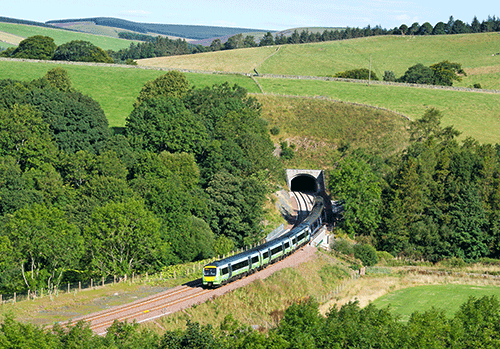
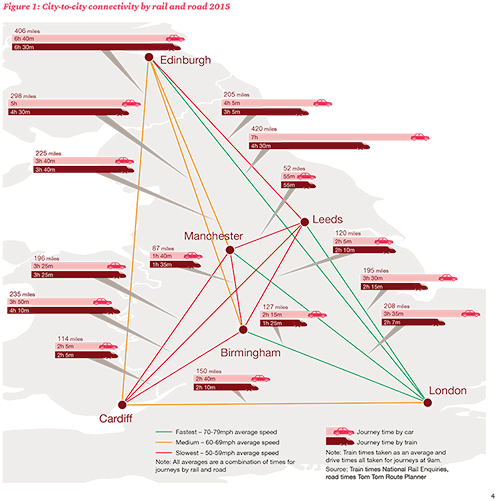
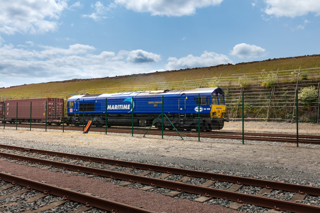
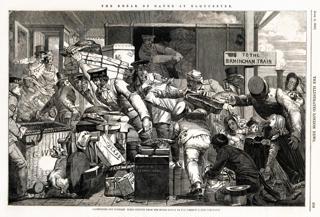
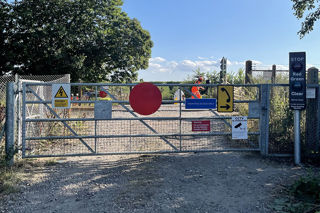
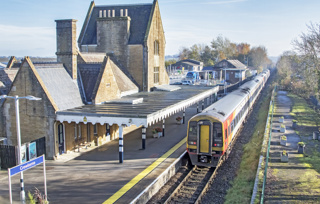
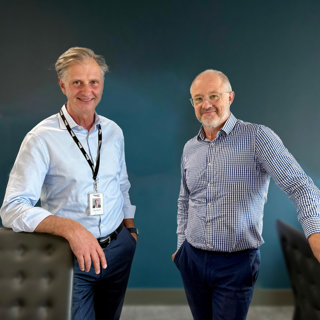

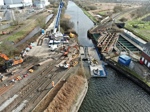









Login to comment
Comments
No comments have been made yet.